All text and images in Tap lines are copyrighted 2003 and any Commercial use is reserved and must be cleared by written
permission by Donald R. Hensley, Jr. and/or the individual authors and/or photographers. Click here for terms of use.
Cabbage Stacks at Slater
A Short Illustrated History of the
The Dowling and Camp Incorporated's
Sawmill at Slater, Florida.
By Donald R Hensley, Jr. with a lot of help from Willie Grant
and the late Earnest "Frog" Smith and George Pettengill.
All Photos from Donald R. Hensley, Jr. collection unless noted otherwise.
Copyright 2003 by Donald R. Hensley, Jr.
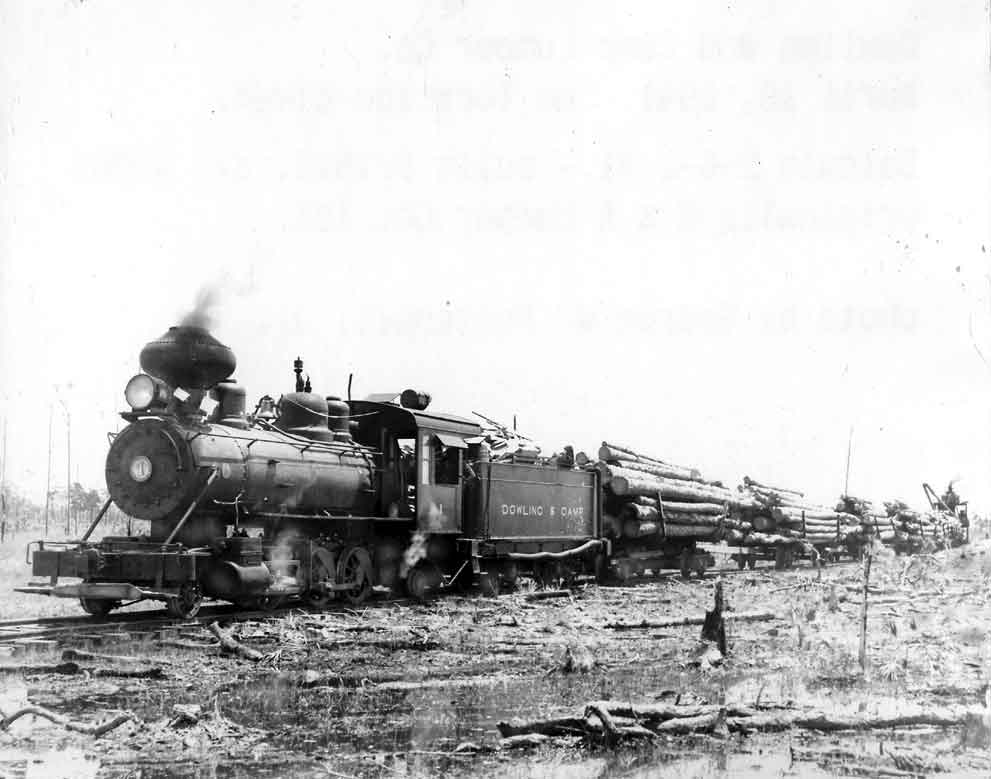
Dowling & Camp number 1 somewhere out on the logging line 9 miles south of Alva, Florida.
Taken on April 10, 1941 by George Pettengill . Note the loader working in the background.
Click here to see the loader.
The Slater sawmill and company town
was originally built by the J.W. McWilliams Company, Inc. of Ft. Myers
around 1924 and was named for a close friend of McWilliams. The sawmill
and town was built on the Atlantic Coast Line tracks across the
river a few miles north of Ft. Myers. Their logging line was built west
towards the
coast, crossing the Seaboard Air Line tracks at Salvista. When
McWilliams logged
out in 1929 he sold the mill to the Gulf Pine Lumber Co. which
was
shutting down their Odessa Mill. William H. and James H. Dowling
brought on board Vaughn Camp as a partner and they operated the Slater
mill as the Dowling and Camp Inc.

D&C 103 drinking swamp water on a trestle was captured by Robert M. Hanft, circa 1936.
The
Dowling and Camp Inc. soon purchased a tract on the east side of
Labelle and arranged for trackage rights over the Seaboard through Ft.
Myers to Labelle, where Dowling and Camp logging trackage ran southeast
into the Piney woods. Dowling and Camp used locomotives numbers
103, 170 and later on numbers 10 and 44 as mainline loggers that had to
be ICC and Seaboard Certified. The empty log train left the mill
about noon time, heading west to the Seaboard crossing a few miles
away. The D&C tracks entered the Seaboard tracks at the
unincorporated village of Tamiami City using a
turning wye. However the nearest agency and billing point was at
Salvista so the junction was also known by that name. The
North wye track was used for interchange, while the south wye was used
for running towards Ft. Myers. The empties would run across the
Caloosahatchee River
to East Ft. Myers where the interlocking for the Labelle Branch was
located. Here the train man was locked in the building until all the
switches were realigned for the mainline. The train would then proceed
to the Labelle camp where they would drop off the empties and pick up
yesterday's loads, returning to Slater that evening, unloading the next
morning before starting the cycle again.
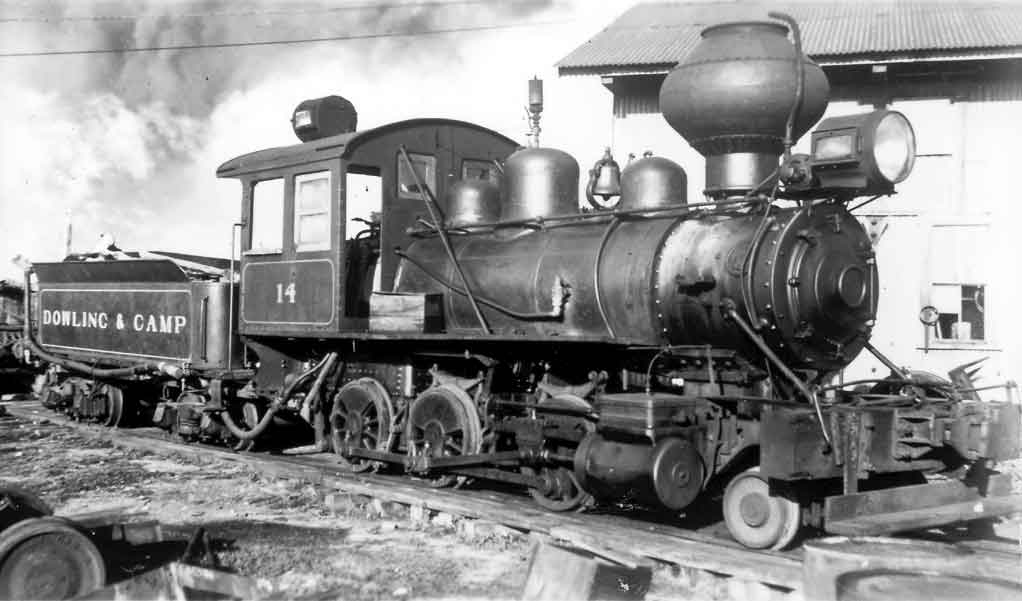
D&C 14, a lovely 1911 Vulcan 2-6-0 at the shops at Slater.
Photographed on April 10, 1941 by George Pettengill.
The
Dowling & Camp's logging camp near Labelle was the center of
logging operations southeast of Labelle. Here the logging mainline
traveled as far east as Atlantic Coast Line's Immokalee Branch
and crossed that branch. The logging locomotives such as D&C 1,3,12
and 14 would take over the empties from the
mainline
locomotives and haul the trains out over the light logging spurs.
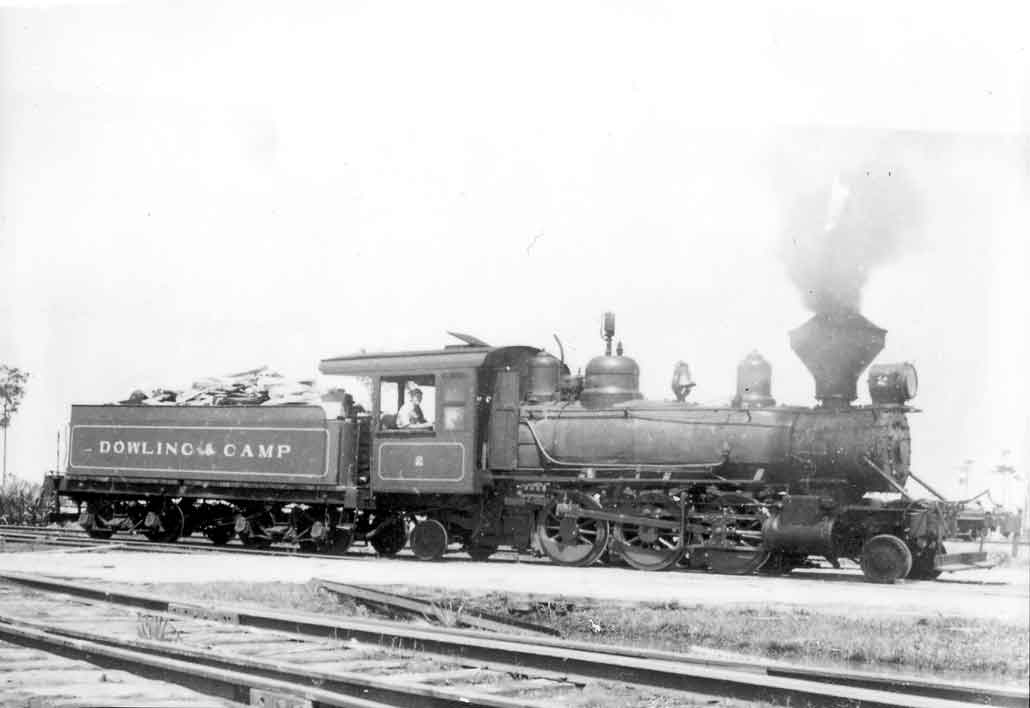
D&C # 2 was the regular mill switcher. Claude Page is the engineer here.
Photographed at Slater on July 13, 1938 by George Pettengill.
In the 1940's Earnest "Frog" Smith was the regular engineer of the 2 spot.
This little Baldwin Prairie was built in 1920 and was sold to the Lee Tidewater Lbr Co.
and survives to this day at the museum down in Naples.
After
the Labelle tract was logged out the company moved the camp near Alva
and ran a new logging mainline south. Here the schedule of the mainline
trains changed because the distances were shorter. The mainline empty
train left the mill early in the morning and return early enough in the
afternoon to unload before nightfall.
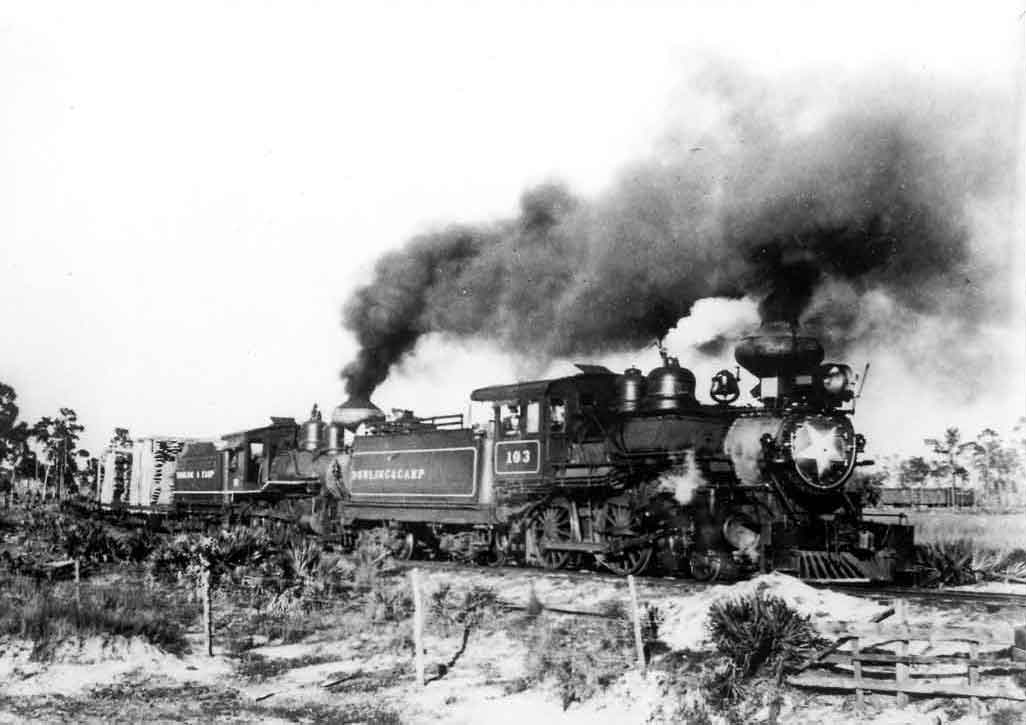

D&C 103 drinking swamp water on a trestle was captured by Robert M. Hanft, circa 1936.

D&C 14, a lovely 1911 Vulcan 2-6-0 at the shops at Slater.
Photographed on April 10, 1941 by George Pettengill.

D&C # 2 was the regular mill switcher. Claude Page is the engineer here.
Photographed at Slater on July 13, 1938 by George Pettengill.
In the 1940's Earnest "Frog" Smith was the regular engineer of the 2 spot.
This little Baldwin Prairie was built in 1920 and was sold to the Lee Tidewater Lbr Co.
and survives to this day at the museum down in Naples.

A load of lumber being hauled to
the Seaboard interchange by a double header train, 103 and 10.
While Slater was on the Atlantic Coast Line, they hardly used that interchange.
Instead their terms of trackage rights over the Seaboard included a preferred connection agreement between the two.
William Dowling died in 1941, leaving his widow, Hallie Dowling in charge. Negotiations on a new timber tract broke down soon after and the Dowling and Camp Lumber Co. soon ran out of Pine to cut. The last tree was sawed in 1944. The locomotives and equipment was dispersed or scrapped, some went further south to the Lee Tidewater Cypress Co. Cypress operations in Copeland or the C.J. Jones Lbr Co. Yellow Pine logging at Jerome, Florida.

Click here for part 2 ,
more of
George Pettengill's photos.
Click here for part 3 , Willie Grant's Photos.
Click here for the part 4, the locomotive roster.
Click here to return to Tap Lines Index.
While Slater was on the Atlantic Coast Line, they hardly used that interchange.
Instead their terms of trackage rights over the Seaboard included a preferred connection agreement between the two.
William Dowling died in 1941, leaving his widow, Hallie Dowling in charge. Negotiations on a new timber tract broke down soon after and the Dowling and Camp Lumber Co. soon ran out of Pine to cut. The last tree was sawed in 1944. The locomotives and equipment was dispersed or scrapped, some went further south to the Lee Tidewater Cypress Co. Cypress operations in Copeland or the C.J. Jones Lbr Co. Yellow Pine logging at Jerome, Florida.

Another cute little Vulcan,
the three spot was a rare modern day 2-4-0 built by Vulcan in 1915!
Here she was photographed at Slater on March 7, 1936 by George Pettengill.
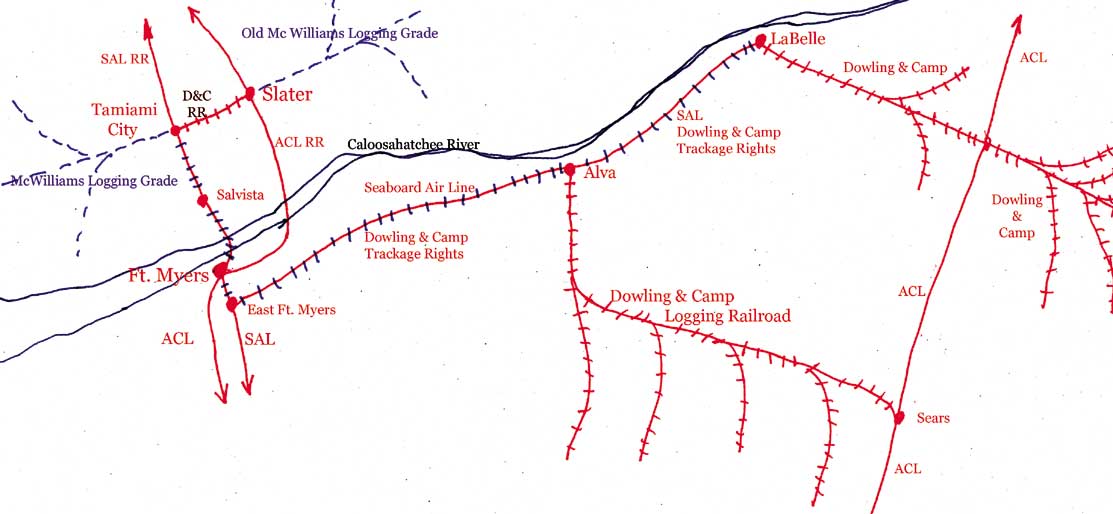
Here she was photographed at Slater on March 7, 1936 by George Pettengill.

Click here for part 3 , Willie Grant's Photos.
Click here for the part 4, the locomotive roster.
Click here to return to Tap Lines Index.